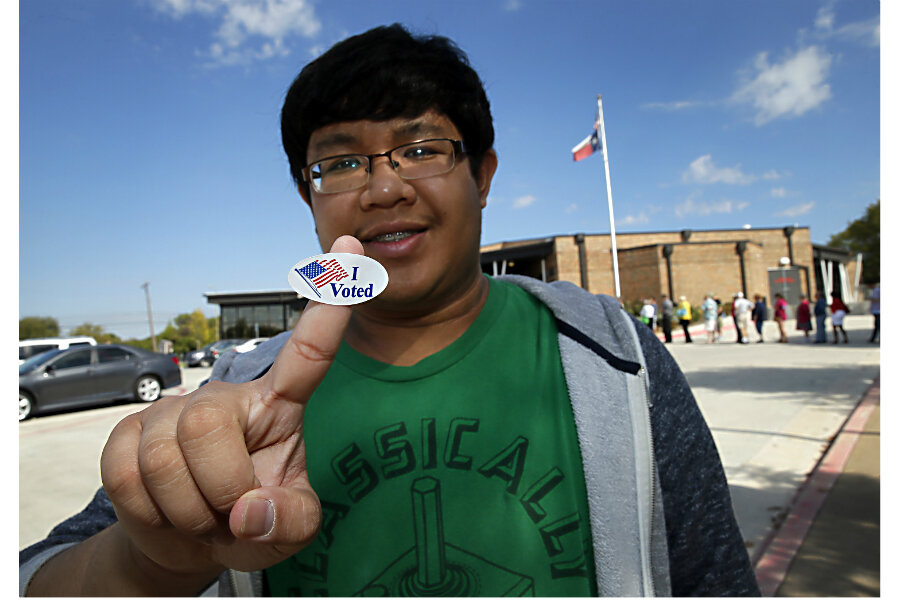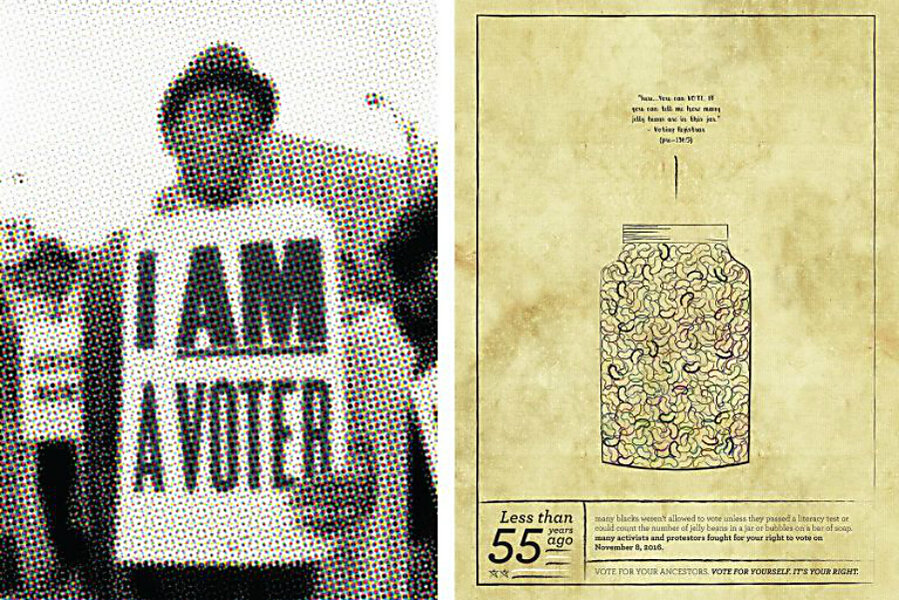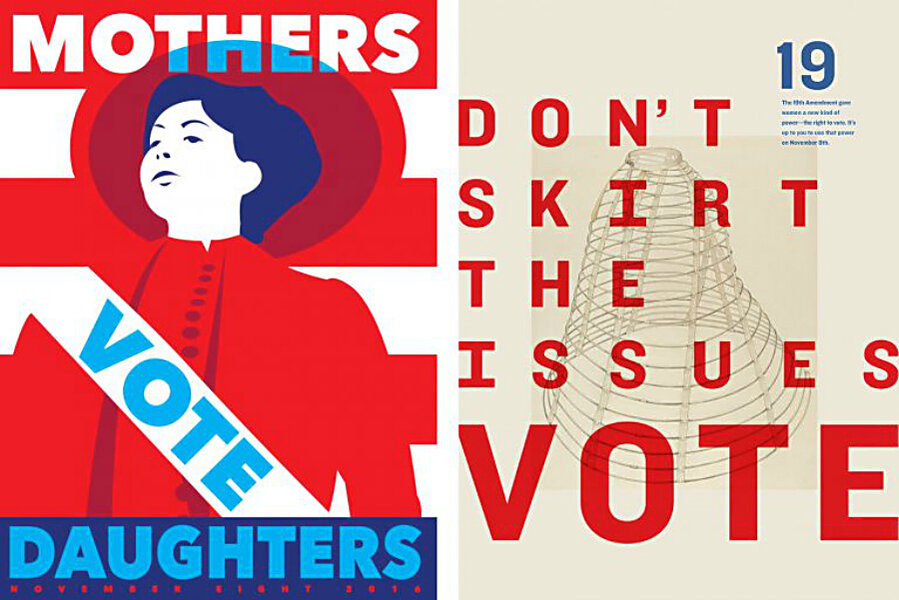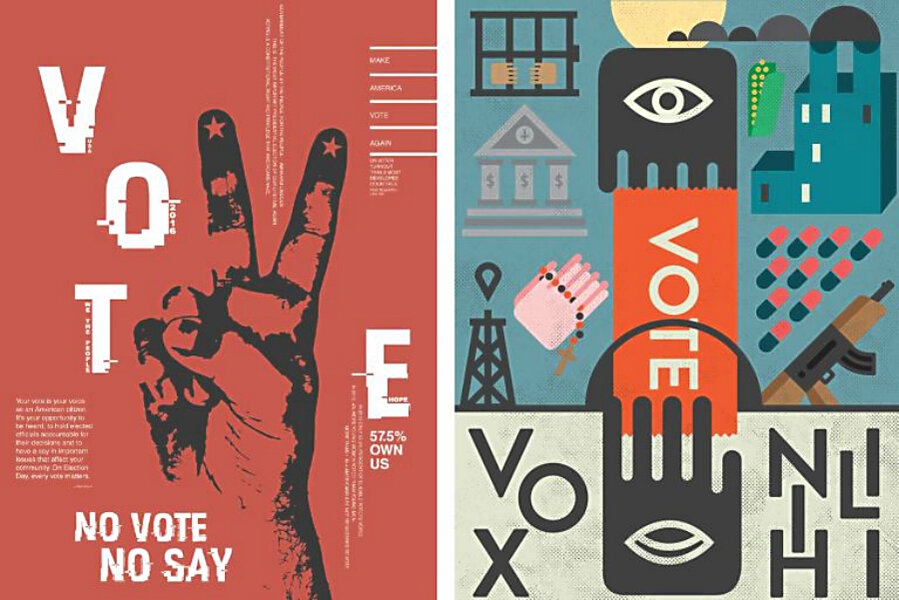Get out the vote: eight posters encouraging people to cast ballots
Loading...
The privilege of casting a ballot is the lifeblood of democracy – and from the fight for women’s suffrage to the Voting Rights Act of 1965, Americans have struggled to have the right to do so. Despite the sacrifices made throughout history to secure voting rights, nearly half of adults eligible to head to the polls decided to sit out the 2012 presidential election. “Get Out the Vote,” a collection of original posters designed to fit the theme of exercising the right to vote, hopes to inspire the public to turn out in 2016.
The project is the result of a partnership between the League of Women Voters and the American Institute of Graphic Arts, which represents 26,000 graphic designers. Since 1998, the AIGA’s program Design for Democracy has brought together researchers, designers, and policy makers to further the public good through visual and communication arts. To encourage Americans to cast their ballots, in years that a presidential election is held, AIGA hosts an online gallery of the posters created by its members. It also organizes exhibitions of the posters and holds voter mobilization events organized by AIGA chapters across the country.
“This year, the project has taken on a life of its own with the activation that’s been produced in parallel with the traditional gallery of posters,” Laetitia Wolff, director of strategic initiatives at AIGA, told TakePart. “Making people realize that [voting] is a duty of the citizen, that this is the right they have to enact. That’s what a good poster can do.”
Following are eight of the posters from AIGA’s 2016 “Get Out the Vote” series.
The voice of the people
The posters above, “No Vote/No Say” by Gregg Strokes and “Vox Nihli” by Robert Renteria, tackle the issue of voter apathy in the United States. Strokes’ piece highlights anemic voter turnout statistics and argues that those who vote make decisions for those who do not. Renteria’s piece plays off the Latin phrase vox populi, which translates to “voice of the majority.” The poster expresses the idea that not voting because of a lack of faith in the system essentially gives up that voice to the special interests that lobby the government.
The 19th
“Mothers and Daughters Vote” and “Don’t Skirt the Issues,” by Heidi Schmidt and Su Mathews Hale, respectively, are homages to the suffragettes who fought for the passage of the 19th Amendment, which gave women the vote when it was ratified in 1920.
Mobilizing Latinos
Only 47 percent of Americans of Latino descent voted in the 2012 election. Courting this growing demographic has become critical in swing states, such as Nevada, Arizona, and Florida. The posters above, by Agustín Garza and Rebecca Perez, are aimed at mobilizing Latino voters and assuring them that their votes matter. Garza’s poster, which features actor Edward James Olmos, has been adapted into a PSA that has received airplay in Spanish-language media, including Fox News Latino and Telemundo.
Less than 55 years ago …
The above posters by Tom Newton and Antionette Carroll reflect on the civil rights movement of the 1960s. Newton’s piece, “I Am a Voter,” is inspired by posters carried by striking sanitation workers in Memphis in 1968 that read “I Am a Man.” Carroll’s poster emphasizes that it’s only been 50 years since black Americans weren’t permitted to vote unless they could get around restrictions such as passing rigged literacy tests or paying a poll tax. The poster encourages people in 2016 to vote in honor of the protesters who fought in the civil rights movement for the right to vote.
• Sean Eckhardt is TakePart's editorial fellow.
• This article originally appeared at TakePart, a leading source of socially relevant news, features, opinion, entertainment, and information – all focused on the issues that shape our lives.















